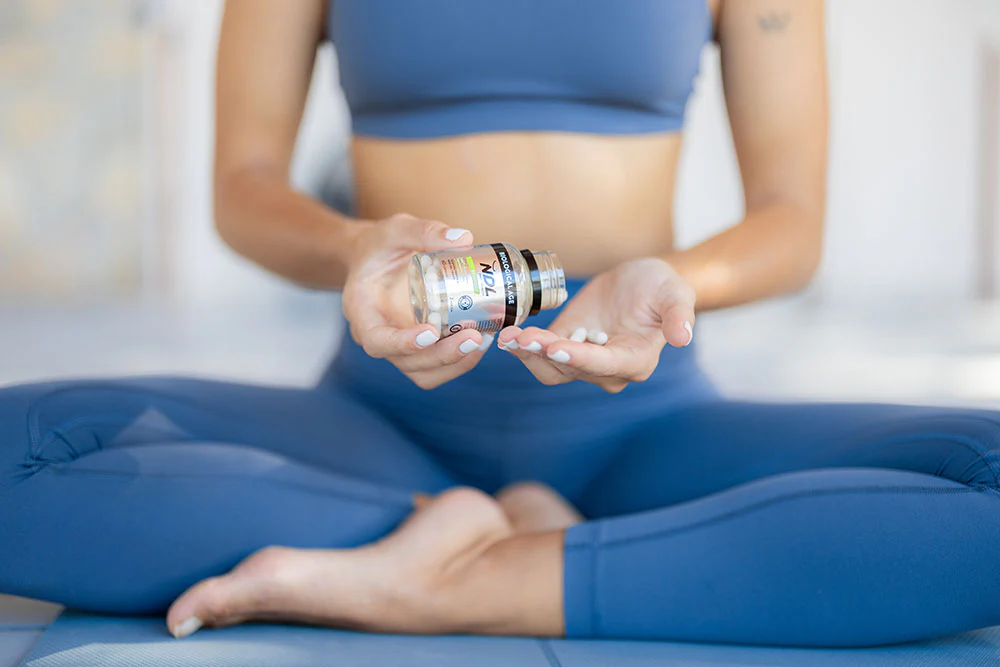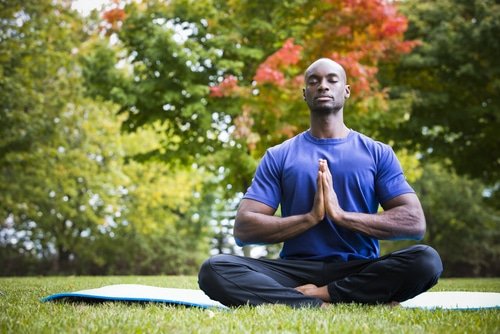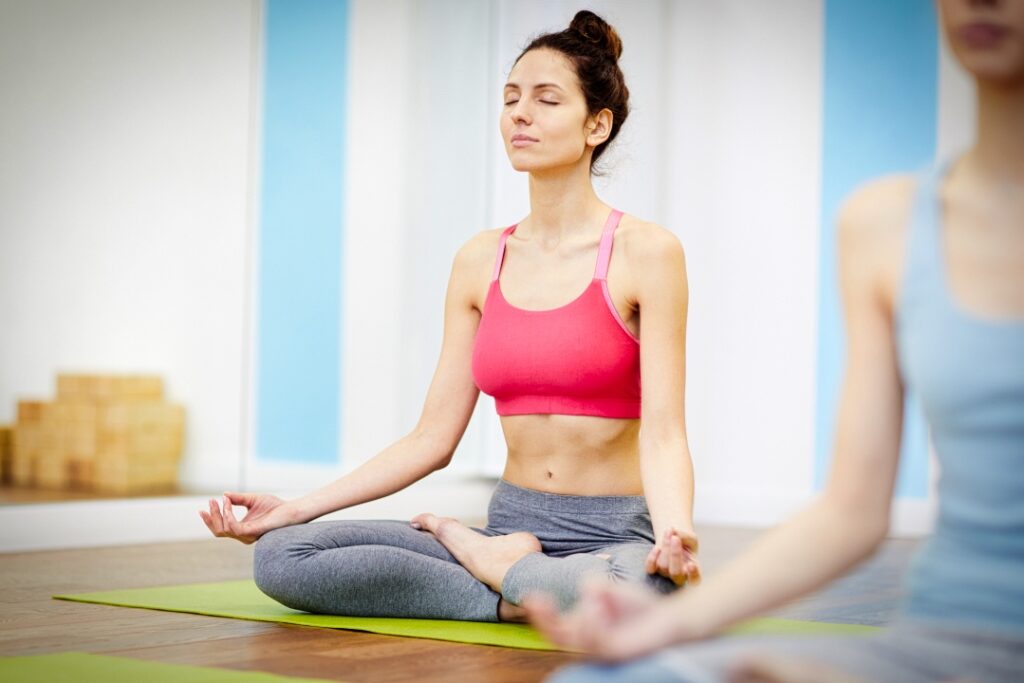I always like to say if you’re sore, it means something happened
But you may be wondering if you should be coming to class or working out if you’re sore
If you’ve ever pushed yourself through a tough workout—whether it’s a run, a weightlifting session, or one of our invigorating YogaFit classes at Be YogaFit Studio in Lauderdale-by-the-Sea—you’ve likely felt that achy, stiff sensation in your muscles a day or two later. This is called delayed onset muscle soreness (DOMS), a common experience for both beginners and seasoned athletes. As Hunter Bennett explains in an article published by The Independent, “Soreness usually sets in within the first 12–24 hours after your exercise session, and often peaks 24–72 hours after” (The Independent, 2025). At Be YogaFit Studio, we believe in empowering our community with tools to manage DOMS effectively, so you can keep moving, stay strong, and feel your best.
As the owner of Be YogaFit Studio, I’ve spent decades teaching yoga and fitness, helping thousands of students recover from soreness and build resilience through mindful movement. In this comprehensive guide, I’ll dive into why DOMS happens, how yoga and stretching can alleviate it, and which supplements—such as amino acids, creatine, and vitamin C—can support your recovery. Whether you’re a yogi, a gym-goer, or someone looking to stay active without discomfort, this blog will equip you with practical strategies to ease muscle soreness and enhance your wellness journey.

Understanding DOMS: Why Do Muscles Get Sore?
DOMS is the body’s natural response to intense or unfamiliar exercise. As Bennett notes, “When you exercise, tiny tears (also called ‘microtears’) occur in your muscles. Then, as your body floods the area with fluids and nutrients to repair them, it causes inflammation” (The Independent, 2025). This inflammation stimulates pain receptors, leading to that familiar soreness that can make it tough to walk down stairs or lift your arms after a workout.
DOMS is most likely to occur when you:
• Start a new exercise routine (like trying our YogaFit scupt glow Flow class for the first time).
• Increase the intensity or duration of your workouts (e.g., adding weights to your yoga practice).
• Engage in exercises that involve eccentric muscle contractions, such as running downhill or lowering weights, which stress muscles more intensely.
At Be YogaFit Studio, we see DOMS frequently among students who are new to yoga or those who’ve intensified their practice with classes like YogaFit Strength or Vinyasa Flow. The good news? DOMS is a sign your body is adapting and getting stronger. As Bennett points out, “The more often you do the same type of exercise, the less likely you are to feel sore” (The Independent, 2025). However, when soreness strikes, yoga, stretching, and targeted supplements can make a significant difference in how you feel and recover.
The Role of Yoga in Easing DOMS
Yoga is a powerful tool for managing muscle soreness, combining gentle movement, stretching, and mindfulness to promote recovery. At Be YogaFit Studio, our classes are designed to support your body’s natural healing processes while building strength and flexibility. Here’s how yoga helps with DOMS:
1. Improves Blood Flow to Sore Muscles
Yoga poses, particularly gentle flows and restorative postures, increase circulation to affected muscles. Enhanced blood flow delivers oxygen and nutrients to repair microtears, reducing inflammation and soreness. For example, poses like Downward-Facing Dog and Child’s Pose gently stretch and engage muscles while encouraging blood flow.
We are now pleased to announce we have several gentle classes on the schedule are most popular being Tuesday at 1 PM
Join our Restorative Yoga class at Be YogaFit Studio, where we focus on long-held, supported poses to relax muscles and promote circulation. A simple sequence like Cat-Cow to Child’s Pose can work wonders for sore legs or shoulders after a workout.
2. Reduces Muscle Tension and Stiffness
DOMS often comes with stiffness, making movement feel labored. Yoga’s dynamic and static stretches release tension in tight muscles, improving range of motion. Poses like Thread the Needle (for upper back and shoulders) or Pigeon Pose (for hips and glutes) target common areas where DOMS sets in.
Pro Tip: In our YogaFit Recovery class, we guide students through stretches that specifically address post-workout stiffness. Holding each pose for 30-60 seconds allows muscles to relax without overstretching.
3. Enhances Mind-Body Connection
Yoga’s emphasis on breath and mindfulness helps you tune into your body, distinguishing between normal DOMS discomfort and potential injury. Bennett advises, “Never push through intense discomfort or pain, as this could be the sign of an injury” (The Independent, 2025). By practicing mindful yoga, you learn to listen to your body’s signals, avoiding overexertion.
Studio Insight: Our all levels YogaFit classes at Be YogaFit Studio incorporate breathwork and meditation to help you stay present, reducing the mental stress that can amplify physical soreness.
4. Supports Active Recovery
Bennett notes that “exercising while recovering from DOMS won’t hurt you” but may temporarily reduce strength or performance (The Independent, 2025). Yoga offers a low-impact form of active recovery, keeping you moving without overloading sore muscles. Gentle classes like Yin Yoga or Hatha Yoga allow you to stay active while giving your body time to heal.
Try This: Attend our Yin Yoga class, where poses are held for 3-5 minutes to gently stretch connective tissues and promote recovery without straining sore muscles.

Stretching: A Complementary Approach to DOMS Relief
While yoga incorporates stretching, targeted stretching routines can further alleviate DOMS by focusing on specific muscle groups. At Be YogaFit Studio, we integrate stretching into every class, but you can also practice these at home:
Key Stretches for DOMS
• Hamstring Stretch: Sit with one leg extended and the other bent, reaching toward your toes. Hold for 30 seconds per side to ease soreness from running or squats.
• Quadriceps Stretch: Stand, pull one foot toward your glutes, and hold for 30 seconds. This targets the front of the thigh, often sore after lunges or cycling.
• Chest Opener: Clasp hands behind your back and lift slightly to stretch the chest and shoulders, relieving upper-body DOMS from weightlifting or push-ups.
• Hip Flexor Stretch: Kneel in a lunge position, pushing your hips forward gently. Hold for 30 seconds per side to release tension from running or sitting.
Studio Tip: Join our Stretch and Restore workshop at Be YogaFit Studio, where we guide you through a full-body stretching sequence designed to combat DOMS and improve flexibility.
Timing and Technique
• When to Stretch: Stretch after a light warm-up or yoga flow to ensure muscles are warm, reducing the risk of strain. Bennett’s research suggests that balance can be impaired with DOMS, so avoid aggressive stretching that might lead to injury (The Independent, 2025).
• How Long: Hold each stretch for 20-60 seconds, breathing deeply to relax the muscle. Avoid bouncing, as it can exacerbate microtears.
• Frequency: Incorporate stretching daily, especially during the 3-5 days when DOMS peaks, to maintain mobility and reduce stiffness.

While yoga and stretching are powerful for managing DOMS, certain supplements can enhance recovery by reducing pain and inflammation. At Be YogaFit Studio, we advocate for a holistic approach, combining movement with nutrition to optimize wellness. The good news is we offer a lot of products to help with your soreness, including deep blue cream from doTERRA
And amino acids that I swear by many of our students, also feel that they help with soreness and building muscle
Here are three evidence-based supplements to support DOMS recovery:
1. Amino Acids (BCAAs and EAAs)
Amino acids, particularly branched-chain amino acids (BCAAs) and essential amino acids (EAAs), are the building blocks of protein, crucial for muscle repair. BCAAs (leucine, isoleucine, and valine) reduce muscle breakdown and support recovery by stimulating protein synthesis, which repairs the microtears causing DOMS.
• How They Help: Studies show BCAAs can reduce muscle soreness and accelerate recovery when taken post-workout. Leucine, in particular, triggers muscle protein synthesis, addressing the microtears described by Bennett (The Independent, 2025).
• Dosage: Take 5-10g of BCAAs or EAAs before or after workouts. Look for a 2:1:1 ratio (leucine:isoleucine:valine) for optimal results.
• Sources: Available as powders or capsules. Food sources include eggs, shrimp (like in our recovery-focused shrimp fried rice recipe), and chicken.
• Studio Tip: Pair BCAA supplementation with our YogaFit Strength class to support muscle repair while building strength.
2. Creatine
Creatine is widely known for enhancing performance but also aids recovery. It increases muscle energy stores (ATP), supporting repair processes and reducing inflammation associated with DOMS.
• How It Helps: Research indicates creatine can reduce muscle damage and soreness by improving energy availability for repair. It may also decrease inflammation, easing the discomfort noted by Bennett (The Independent, 2025).
• Dosage: Take 3-5g of creatine monohydrate daily, ideally post-workout with a carb-rich meal (like our shrimp fried rice) to enhance absorption.
• Sources: Found in red meat and fish, but supplements are more practical for consistent dosing.
• Studio Tip: Use creatine to fuel your practice in our Power Yoga classes, where strength and endurance are key, and recover faster from DOMS.
3. Vitamin C
Vitamin C is a potent antioxidant that combats inflammation and oxidative stress caused by exercise-induced muscle damage. It supports collagen formation, which strengthens connective tissues affected by DOMS.
• How It Helps: By neutralizing free radicals, vitamin C reduces inflammation, potentially shortening DOMS duration. It complements the recovery process described by Bennett, where inflammation drives soreness (The Independent, 2025).
• Dosage: Aim for 500-1000mg daily, taken with food to avoid stomach upset. Avoid mega-dosing, as excess vitamin C is excreted.
• Sources: Include citrus fruits, bell peppers, or supplements. Our shrimp fried rice recipe with added spinach and peppers boosts natural vitamin C intake.
• Studio Tip: Take vitamin C before our Restorative Yoga class to enhance its anti-inflammatory benefits during recovery-focused poses.
Additional Supplement Tips
• Omega-3 Fatty Acids: These reduce inflammation and may complement yoga’s anti-inflammatory effects. Take 1-2g daily (fish oil or algae-based).
• Magnesium: Supports muscle relaxation and reduces cramps. Take 200-400mg before bed or add magnesium-rich foods like spinach (in our recipe).
• Consult a Professional: Always check with a healthcare provider before starting supplements, especially if you have medical conditions or take medications.

At Be YogaFit Studio in Lauderdale-by-the-Sea, we’ve designed our programs to help you manage DOMS holistically. Here’s how to combine yoga, stretching, and supplements for optimal recovery:
1. Start with Gentle Yoga: If you’re sore, attend our Restorative Yoga or Yin Yoga classes to promote